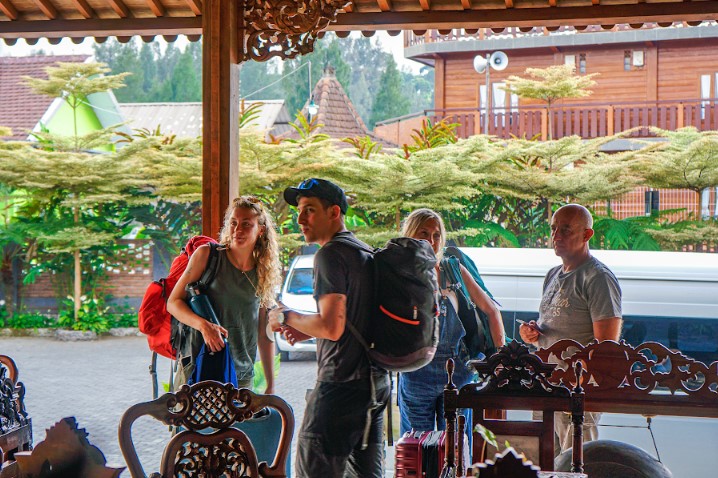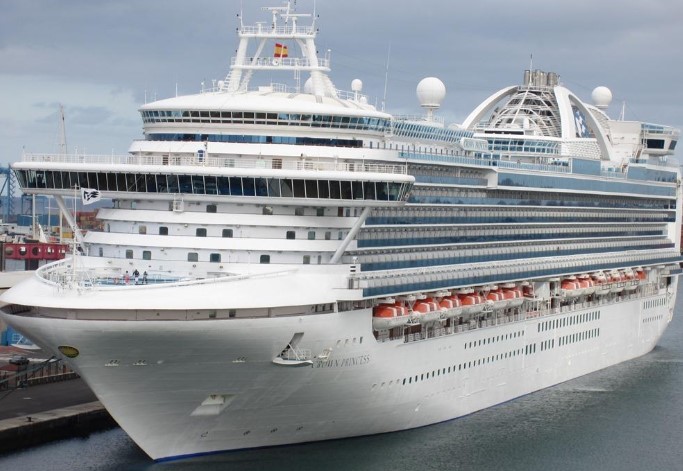Memorial Day weekend is a popular time for travel, whether it be an early summer vacation or simply a chance to visit with family.
Before you join the many who are planning on traveling this weekend, here’s a rundown of some of the things you can expect on the road, or in the air, this year.
In short: it will be more crowded and more expensive. So it might help to have some plans in place!
Higher numbers of travelers
Pent-up demand for travel during the COVID-19 pandemic means that people are definitely going to be out in force this year. The number of travelers will be high, particularly in comparison to the pandemic years of 2020 and 2021, but also in comparison to pre-pandemic trends.
“For this year, AAA is predicting about a 39.2 million people to travel 50 miles or more from home this Memorial Day weekend,” said Doni Spiegel, public relations manager for AAA Central Penn. “That is up 8.3 percent over last year, and almost in line with pre-pandemic numbers.”
According to a press release from the Pennsylvania Turnpike Commission, an estimated 2.2 million drivers will be using the Turnpike over the Memorial Day weekend – an increase of nearly 300,000 from last year. It’s also an increase of three percent compared to 2019′s pre-pandemic numbers.
And those increases aren’t just found on the roads. Flying is also seeing a boom, with estimates close to, or above, pre-pandemic numbers.
“Air travel volume, which began to rally last Thanksgiving, will hit levels just shy of 2019, with 3 million people expected to take to the skies this Memorial Day weekend,” Spiegel said. “And is it due to surpass 2019 levels, with 7.7 percent of travelers choosing air travel as their preferred mode, when in 2019 it was 7.5 percent of people that flew.”
There are 107 departing flights scheduled from Harrisburg International Airport this weekend, according to HIA spokesperson Scott Miller. That’s up from last year’s 94 flights over the same time.
“The other piece of this puzzle is, how full will these airplanes be?” Miller said. “So far this year, we have averaged 88 percent full. Last year in May, it was 80 percent or 81 [percent].”
Miller said that the airport expects 7,900 departing passengers to pass through HIA this year, a 30 percent increase from last year’s 5,700.
“The reason for that is, last year at this time, we were still coming off [COVID-19] restrictions,” he said. “Not everything was open. Now, nationwide, things are open, there are fewer mask mandates, fewer restrictions. Travel is definitely coming back. This will put us at about 90 percent of where we were back in 2019.”
Gas prices going up
And all of those increases will be despite the record-high prices of fuel.
- READ MORE: Gas prices for Memorial Day 2022 will be highest they have ever been
This interactive map tool from AAA can display the average of gas prices for each state in the nation. As of the writing of this story, Pennsylvania’s average price is $4.77 per gallon – higher than the national average of $4.59. And demand is only going to make prices go up.
“Tighter supply and increased demand have pushed pump prices higher,” said AAA in a previous story on PennLive. “This supply/demand dynamic, combined with volatile crude prices, will likely continue to keep upward pressure on pump prices.”
Those same fuel costs affect airline prices, Miller said, but more slowly.
“It doesn’t happen right away, but it does happen,” he said. “It’s unlike the gas station, where we see prices jump from $4.50 to $4.75 overnight. It’s harder to raise air fares that way, because air fares are all based on demand.”
And the closer you get to the day of departure, Miller said, the more those prices are going to rise.
“Flights, car rentals, accommodations, tours, cruises and other activities are in high demand right now, and availability will fill up,” Spiegel said.
Safety precautions
With the increases in numbers of drivers and vehicles on the road, it’s logical to assume that some of the dangers in driving would increase as well.
Ironically, PennDOT statistics from 2020 and 2021 reveal that, even when fewer cars were on the roads, there were more vehicle-related deaths during the pandemic than in the year preceding it.
“There were actually fewer crashes,” said Jennifer Kuntch, spokesperson for PennDOT. “But there were more fatalities. It’s hard to say why exactly that was happening. We can point to the data. We can tell you that there were more unbelted fatalities, we can tell you there were more impaired fatalities or more distracted driving fatalities. There were definitely more aggressive driving fatalities – and aggressive driving includes speeding, or careless lane changes, and things like that.”
In response, several agencies, including PennDOT, the Pennsylvania Turnpike and Pennsylvania State Police, have issued reminders about the obligation that drivers have to keep both themselves and others safe.
“We just want everyone to kind of take take stock of the safety behind the wheel,” Kuntch said. “You know, it’s all of our responsibility.”
Mark Compton, Pennsylvania Turnpike CEO, cautioned drivers to be prepared for that additional traffic by paying even closer attention to driving safely.
“A moment’s distraction can have devastating consequences,” Compton said in a press release. “Put your phone down, watch your speed and pay attention to what is happening on the roadway.”
The same press release quoted Corporal Matthew Johnston of the Pennsylvania State Police, who said, “with Memorial Day weekend upon us and a surge in holiday traffic anticipated, we echo the reminder to motorists of the importance of safe driving habits.”
State police barracks such as Troop L in Berks, Lebanon and Schuylkill counties, have issued statements announcing their intent to crack down on impaired, distracted or aggressive driving this weekend, as well as on seatbelt usage and speeding.
Planning is everything
This advice might come a bit late for those who haven’t set their travel plans in stone already. But for both flying and driving, the sooner you start planning a trip, the better.
“If I’m looking to buy an airline ticket, there’s always fluctuation,” Miller said. “It’s like a stock price. Stock prices go up and down all the time. So do airfares. So if you find a fare you think is fair and reasonable, book it. It’s going to go up the closer you get [to the date of departure].”
Miller advises that, if you’re flying, you’ll want to arrive early. And the earlier your flight departs, the more time you want to give yourself. In addition to increased numbers of travelers, like many other industries, airports are having a harder time hiring staff members. And that can mean even more delays going through TSA inspections.
“If you’re flying before 7 a.m., be here two hours early,” Miller said. “The days of showing up 45 minutes or an hour before your departure, like you could do doing the pandemic, and breezing through security? Those days are over, especially if you’re traveling you know before 7 a.m.”
The further out you can buy tickets, the better, he said, with the ideal window being between 30 and 45 days before your flight to lock in the best price. But if you’re going last minute, you can at least try to pick the best days to fly.
“We found that the average lowest airfare is 6 percent more than it was last year,” Spiegel said, “with Saturday being the most expensive day to fly, and Monday being the least expensive day.”
For driving, planning is also helpful. Spiegel said that driving with windows down is cheaper than using air conditioning, despite the debates to the contrary about wind resistance. It also helps to double-check your plans for accommodations in advance, to ensure you’re not scrambling when you arrive at your destination. And planning a route in advance can also save both time and money.
For those hoping to plan a driving route, Kuntch recommended PennDOT’s new 511pa.com website. Among its features are maps from previous years, which show when and where traffic tended to pile up.
And it doesn’t hurt to keep an eye on the weather, either. It’s no fun driving into a thunderstorm, but flying into a thunderstorm isn’t even an option.
“A bad thunderstorm in Chicago or Dallas or Atlanta can really screw up the national airline system,” Miller said. “So come prepared for a delay if you have if you have a connecting flight.”






More Stories
10 Power-Packed Suitcase Packing Tips for Effortless Travel
Unleashing Solo Adventures: Tips for Traveling Alone
Travel Tips for Beginners: Navigating Your Journey with Confidence